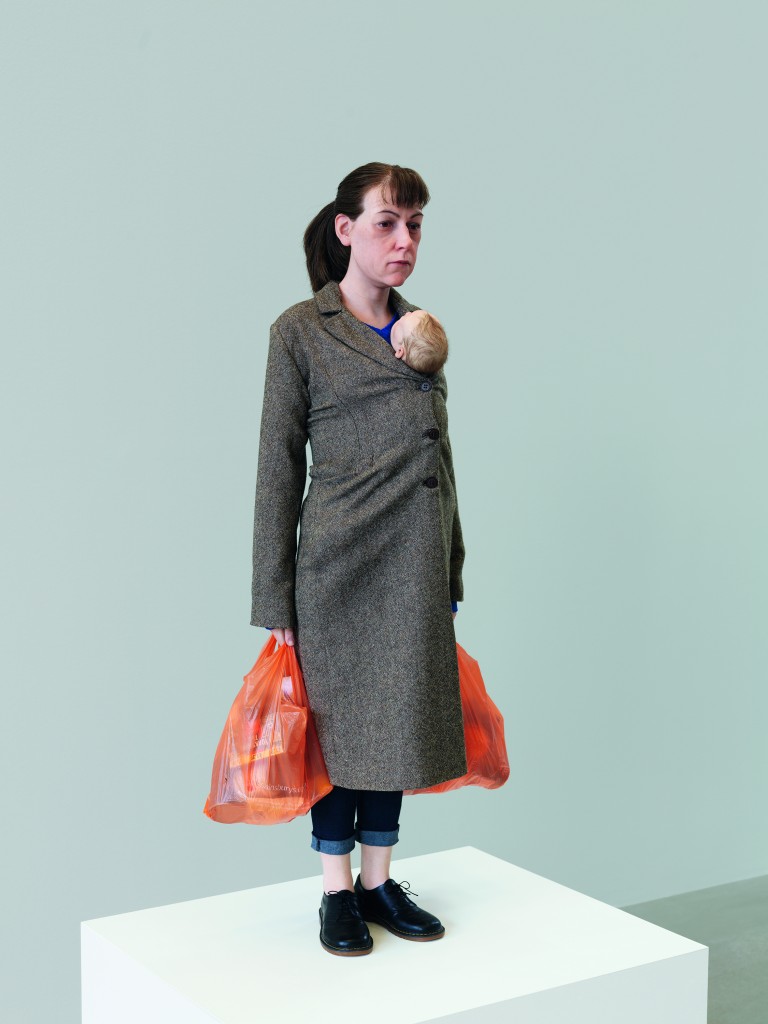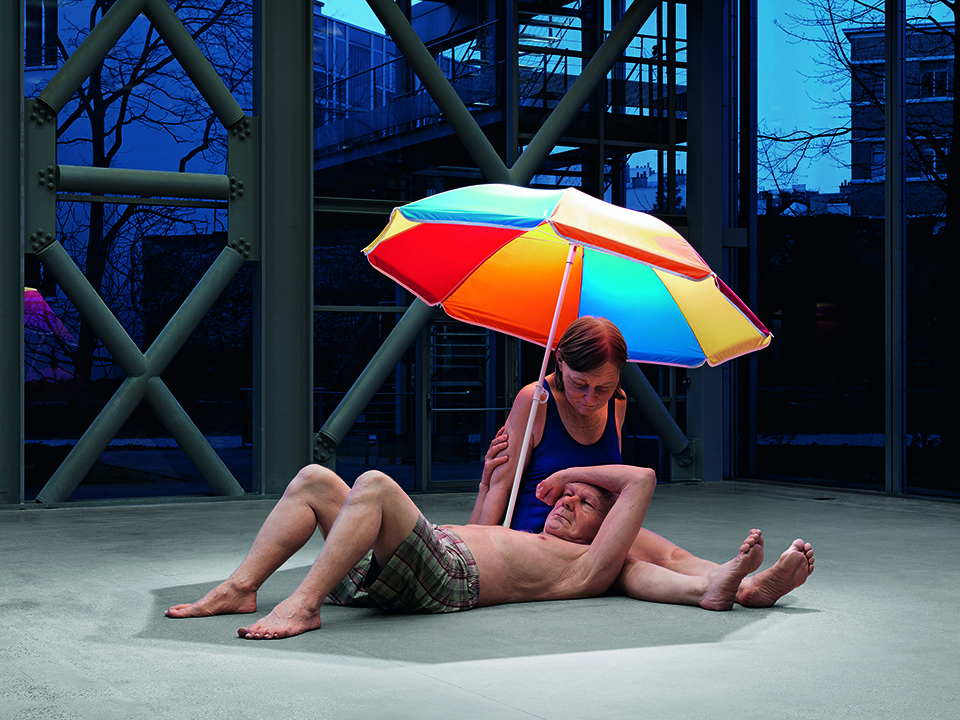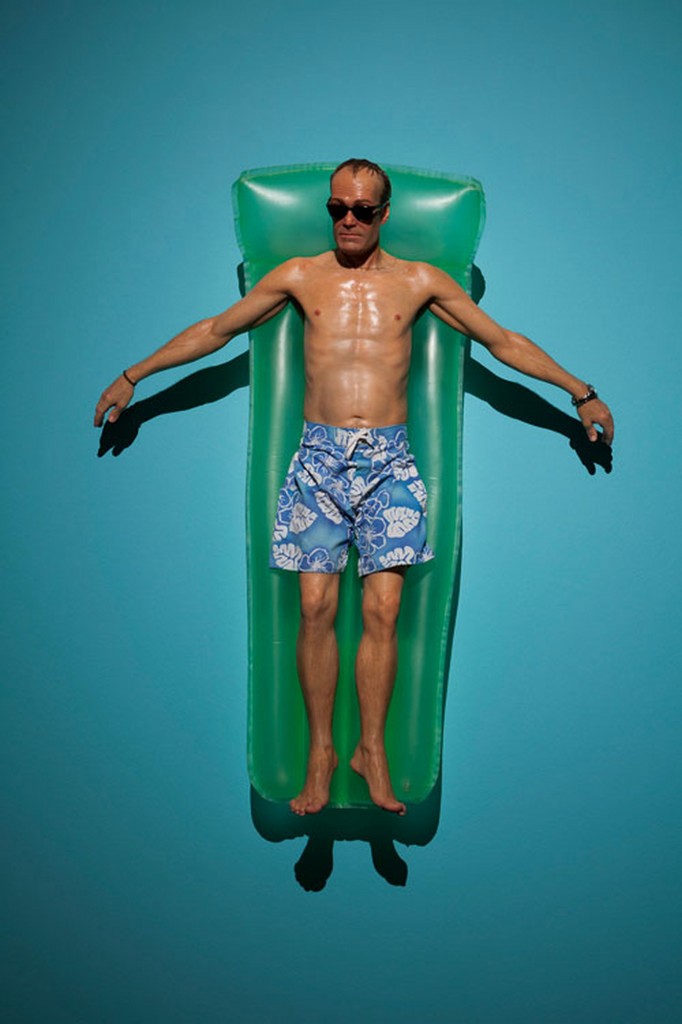Lifelike Or About Life? Ron Mueck’s Sculptures At Fort Worth Modern
ArtandSeek.net March 2, 2018 48Ron Mueck was born in Australia and had a first career making puppets and models for children’s television and for film – you can see his work in the movie “Labyrinth.” He was almost 40 before he drew attention as a sculptor. His pieces are so lifelike, they are startling. You can see every pore and hair. But Fort Worth Modern Curator Andrea Karnes says his work is much deeper than the hyper-realism he’s known for. I sat down with Karnes for this week’s State of the Arts conversation. You can click above to listen. Here are some highlights:
The last Ron Mueck show, in 2007, was a blockbuster for the Fort Worth Modern. It broke attendance records. What is it about his work that resonates so deeply?
Contemporary art especially, can be difficult for viewers. Some people are intimidated by it. Sometimes it’s hard to warm up to something. But any time we see our own likeness, whether it’s in a
photograph, painting, a sculpture, it’s sort of an automatic access. We can relate.
To me the work is pretty existential. It relates deeply to what it means to be human. But it’s complex. It’s not an automatic read. So you want to spend time with the piece, you’re drawn into it.

“Woman With Shopping” by Ron Mueck.
When people think about Ron Mueck, they think about the hyper-realism. But to you, there’s much more to his work than that.
The hyper-real thing is interesting because that’s how Mueck’s work often gets described. And the reason is, because when we see it, we just can’t believe how real everything looks. You can see every pore, every hair, every hair follicle.
There are two things about that. It’s not really hyper-real. Because certain things on each work are out of proportion. Because what Ron Mueck is going for is the feeling of whatever is being portrayed, more than accuracy.
It’s more like if you see “Couple Under An Umbrella” which are these two elderly people sunbathing together under an umbrella. It’s in the exhibition. It’s 14 feet long. Actually, anatomically, it’s not perfect, the piece. But no one notices that. You get the feeling of how your hands and feet are swollen, when you’re in the sun, on the sand in summertime. There are things about the work [where] Mueck leaves accuracy, to gain a feeling.

“Couple Under An Umbrella” by Ron Mueck.
And then the other thing I would say about that is I think a lot of people come to the exhibition expecting one thing. This unbelievable portrayal of something that is hyper-real. But what you leave with is something completely different, I think. which is this sort of empathy or emotional response to what it means to be human.
That’s really what the works are about. More than accuracy.
He also likes to play with scale. His pieces are life-like, but not necessarily life-sized.
I think that also contributes to how we read them. If everything was life size, then we really would be focused on accuracy. But because everything is smaller than life or larger than life, it changes our response.
In our exhibition we have the work that’s in the Modern’s permanent collection called “Seated Woman,” which is an elderly woman – she looks like she’s probably in her mid-80s – with her hands clasped in front of her and kind of leaning forward. She’s two feet high. And there’s something about that scale that speaks to the point of life she’s in, where her physical self is fragile. And she’s vulnerable. That comes across through scale.
I think Mueck understands that if everything was life size, it wouldn’t have the same impact in how we view it.

“Drift” by Ron Mueck.
How has his work changed? Or has it?
Ron Mueck is in a conversation with the history of sculpture, and also with the history of painting. For example, there’s a work in the exhibition called “Drift” And it’s a man who looks like he’s in a swimming pool or in the ocean, on a raft, with sunglasses and a bathing suit on. And the wall behind him is painted blue. Because the piece is hanging on the wall, that tells us Ron Mueck is working with and against, the history of sculpture. Because paintings generally hang on the wall.
And this piece, even though it’s three dimensional, you can’t walk around it. It’s meant to be viewed from the front, like a painting. And it also, kind of, if you think about it, looks like a crucifix. The guys arms are fallen out to his sides, and then his body is straight up and down. For me, that speaks to religious iconography in painting.
I think he’s still engaged, but maybe even more engaged, with art history. And to me that’s the change in his work.










